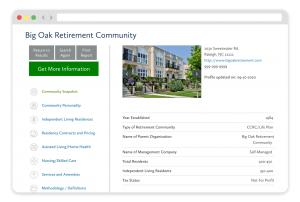Continuing care retirement communities, also called CCRCs or “life plan communities,” can be a wonderful lifestyle solution for many retirees. While there are no perfect solutions and a CCRC may not be the right choice for everyone, I have to believe that the penetration rate should be higher than the current approximate average of 4.5 – 5%. While there are a number of possible reasons for the low penetration rate, I think this excerpt from an email we recently received about CCRC research points to one key reason:
“I began my project of looking for a retirement community many years ago. What I thought would be a simple process has turned into a baffling, unclear, frustrating experience. I can see why people give up (not me!) because it is very confusing.
Did you notice what she said…“I can see why people give up.”
I wonder how many prospective residents of CCRCs or lifecare communities give up searching because they are overwhelmed by the complexity of CCRC contracts and other details? I wonder how many speak to a residency counselor and only walk away with more questions and confusion. How many simply throw their hands up and say “Forget it. I’ll just stay where I am.”
CCRC Research Can Be More Productive
There has never been a better time than now for CCRCs to attract new residents, but without better education and resources, and the availability of decision support tools like MoneyGauge by myLifeSite, many people will simply be too frustrated with their CCRC research to advance through the decision process.

FREE Detailed Profile Reports on CCRCs/Life Plan Communities
Search Communities





